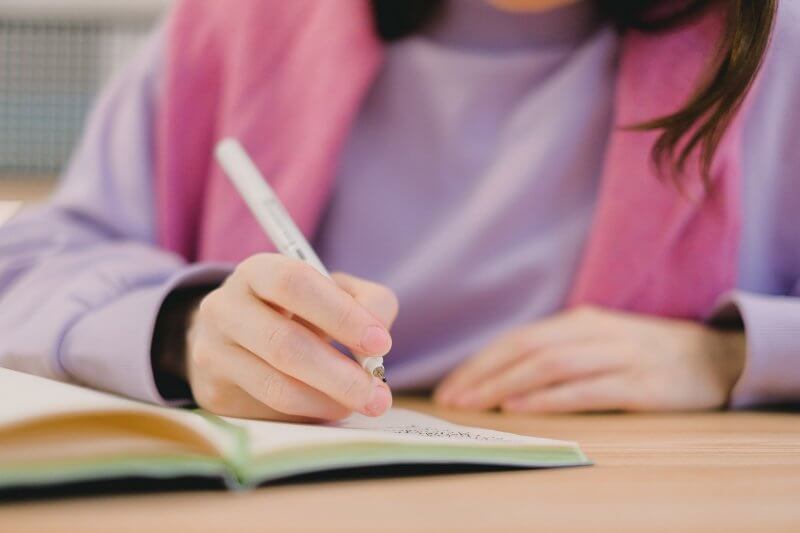 Struggling to understand your algebra assignments? Breaking problems down into manageable steps can make them much easier to handle. Here, Tucson teacher Blake C. shares his simple, 3-step process for solving mixture problems with ease:
Struggling to understand your algebra assignments? Breaking problems down into manageable steps can make them much easier to handle. Here, Tucson teacher Blake C. shares his simple, 3-step process for solving mixture problems with ease:
When you’re working with mixture word problems, there’s a mixture of two or more components. You’re required to determine the result of the mixture – a quantity such as price or percentage.
These are the problems that ask you things like, if you mix 10lbs of peanuts costing $1.50 per pound with cashews costing $2.50 per pound, how many pounds of cashews would you need to add so that the resulting mixture has a cost per pound of $1.95? Or, if you mix 10 liters of pure water with 15 liters of a 30% alcohol solution, what is the concentration of the resulting mixture?
Don’t let confusion discourage you from finding the answer! Following a few simple steps will help you feel like an algebra mixture problems whiz in no time!
How Do You Solve Mixture Math Problems?
While reading mixture problems can have you scratching your head, there are actually only a few steps required to find the answer. This video gives a good run down, then we’ll explain each step below.
Thank you to Carole Del Vecchio for the use of this video!
3 Steps to Solve Mixture Problems
These steps summarize what you just watched in the video. If you have specific algebra mixture problems you’re trying to work out, it may help to work them as you read each step below.
If you’re a parent trying to provide your child with math support, read more about how you can help when you have no clue where to start!
Step 1: Set Up the Problem
Mixture problems have three amounts or quantities. Two of them are the amounts being mixed, and the third is the resulting mixture amount. Each amount has its own % strength or cost. So, the setup follows this logic exactly. I’ll give you one example for each of the two types.
Solution Problems:
(% 1) (amount 1) + (% 2)(amount 2)= (final %)(total amount)
Mixture Problems:
(cost 1)(amount 1) + (cost 2) (amount 2) = (final cost) (total amount)
Now, it’s important to realize that in these problems any one of these six pieces of information can be the unknown. Your job is to fill in all of the given information, figure out the unknown, and replace it with “x.”
Helpful setup tips:
- Though it does not matter whether you use 22 or .22 for 22% for solutions problems, you must stick with your choice for the entire problem.
- The concentration of pure acid is %100.
- The concentration of pure water is 0%.
Step 2: Identify the “x”
All mixture problems require finding “x” to get to the answer. Let’s look at a difficult one to show you how this works out in practice.
“You need a 15% acid solution for a certain test, but your supplier only ships a 10% solution and a 30% solution. Rather than pay extra to have him make a 15% solution, you decide to mix 10% solution with 30% solution, to make your own 15% solution. You need 10 liters of the 15% acid solution. How many liters of 10% solution and 30% solution should you use?”
Okay, so this one has an extra little trick that may often come up in these types of problems. You may notice we’ve only been given the number value of one amount (10 liters). In this problem, we have two unknowns: the amount needed in liters for both the 10% and the 30% percent solutions.
This might seem like a problem, but there’s a simple fix. Think of it this way. We must arrive at a total of 10 liters. Let’s call the number of liters needed for our 10% solution “x.” So, how many liters do we need for the 30% solution? Well, there are 10 liters in total. X liters have been spoken for, so what remains of our allotted 10 liters then is 10-x.
Using this simple trick, we can express both of our unknowns in terms of a single variable. It doesn’t even matter which of the amounts we call x and which we call 10-x, provided we keep track of which is which.
Step 3: Work the Problem
Let’s take that same example problem listing only the most important bits.
“You decide to mix 10% solution with 30% solution, to make your own 15% solution. You need 10 liters of the 15% acid solution. How many liters of 10% solution and 30% solution should you use?”
Okay, let’s put it into our setup for a solution problem. I’ll be putting percentages in decimal form throughout, as that is my preference.
.10(unknown amount) + .30(unknown amount 2) = .15(10)
Now, we talked about identifying the x above. We figured out that we must call one of the unknowns x and the other 10-x. So now, let’s plug that in.
.10(x)+.30(10-x) = .15(10).
Now, let’s solve it!
Step 1: Foil
.10x+3-.3x= 1.5
Step 2: X’s on one side by subtracting 3 from both sides
.1x-.3x= -1.5
Step 3: Combine like terms
-.2x= -1.5
Step 4: Divide by -.2
x= 7.5
Step 5: Find the other unknown
x=7.5
10-x= 10-7.5= 2.5
Step 6: Interpret the result
Since x was used to fill the unknown amount of the %10 solution, we have 7.5 liters of the 10% solution, and 2.5 liters of the 30% solution to end up with 10 liters of our desired 15% solution.
Step 7: Check your work
.10 (7.5) + .30(2.5) = .15(10)
.75+.75= 1.5
This is a true statement.
So there you have it. Practice this method and, before you know it, solving mixture problems will be a breeze!
You might also be interested in: Math Tutor App Recommendations for All Skill Levels
Good Luck Solving Mixture Problems!
Like with any new challenge, it takes practice to grasp a good understanding of solving mixture problems. Once you follow these simple steps a few times, you’ll be able to do it more naturally and quickly.
Working with an algebra tutor can be helpful when learning a new skill. This allows you to perfect your craft with a professional who can guide you in the best way for your learning style!
 Blake C. tutors in various subjects, including math, reading, and SAT prep, in Tucson, AZ and online. A Flinn Scholar, Blake C. graduated from The University of Arizona with a degree in Business Management in 2007 and later returned for a second Bachelor’s in Music Theory History and Criticism which was awarded in December of 2013. Learn more about Blake here!
Blake C. tutors in various subjects, including math, reading, and SAT prep, in Tucson, AZ and online. A Flinn Scholar, Blake C. graduated from The University of Arizona with a degree in Business Management in 2007 and later returned for a second Bachelor’s in Music Theory History and Criticism which was awarded in December of 2013. Learn more about Blake here!
Photo by Robert Cudmore
Suzy S.

